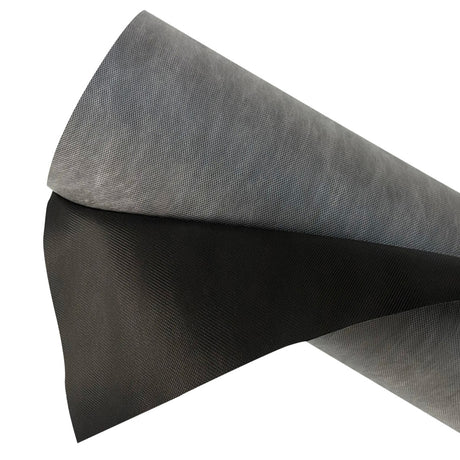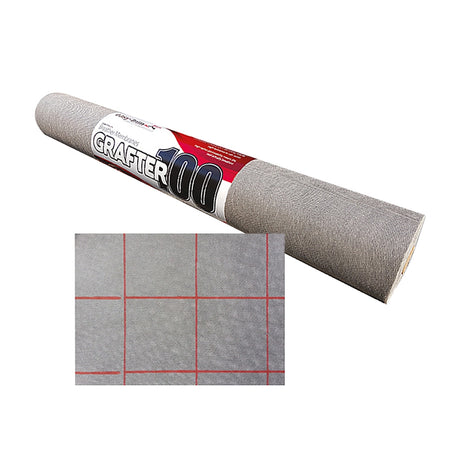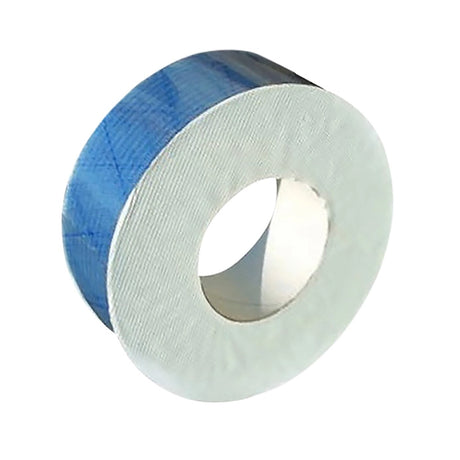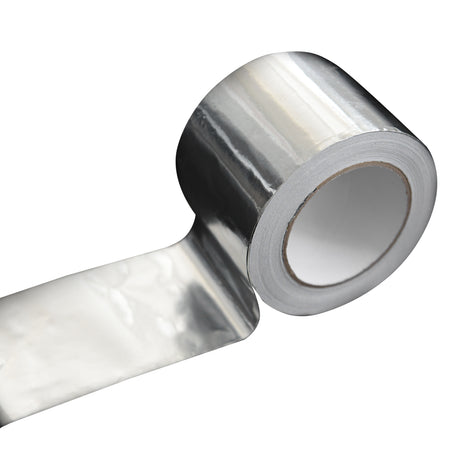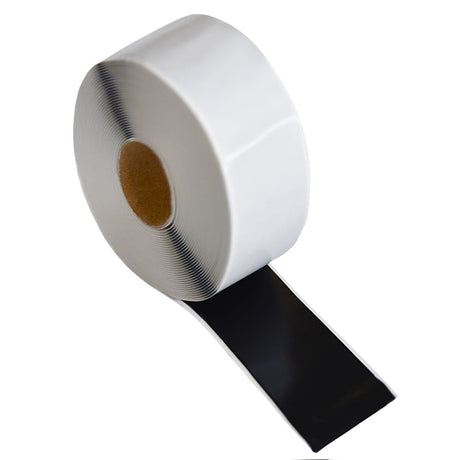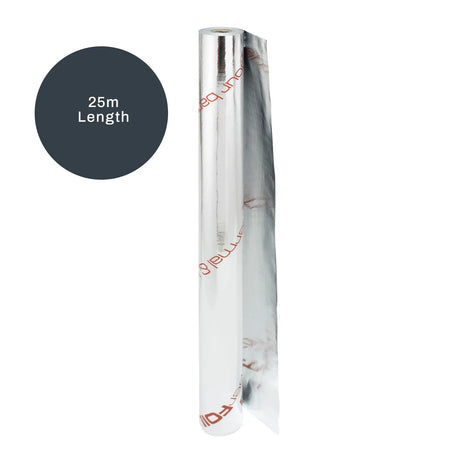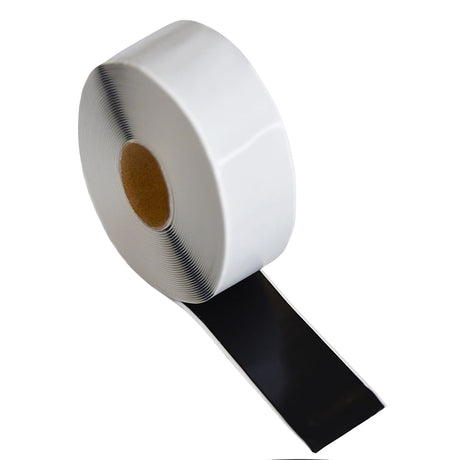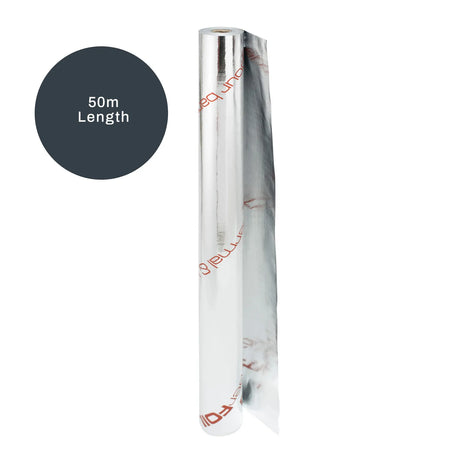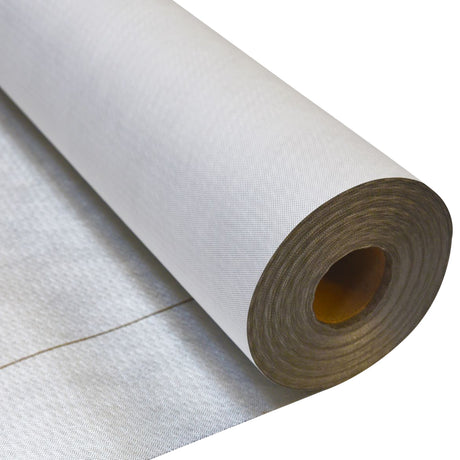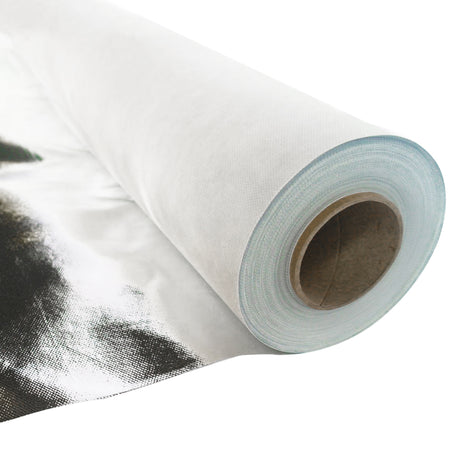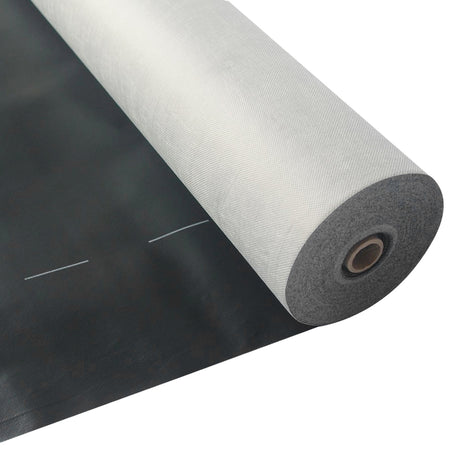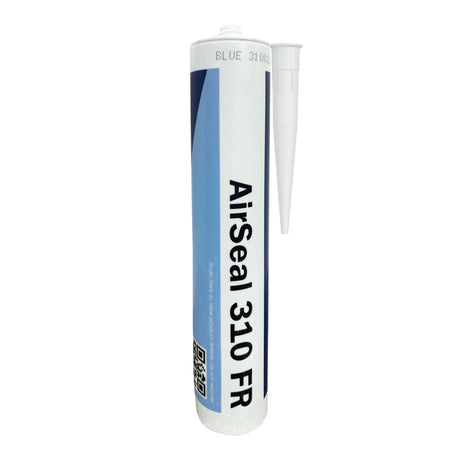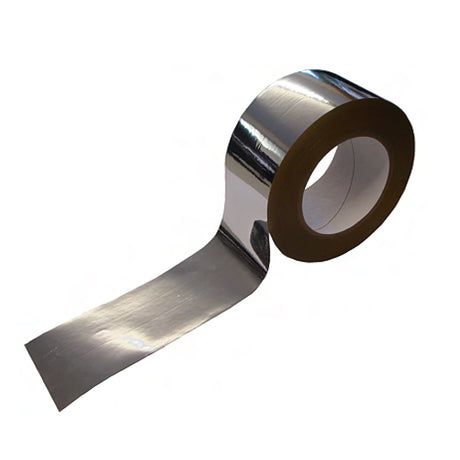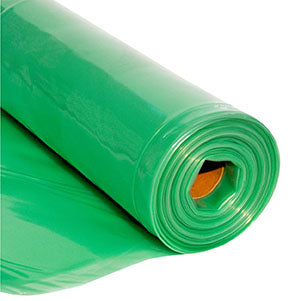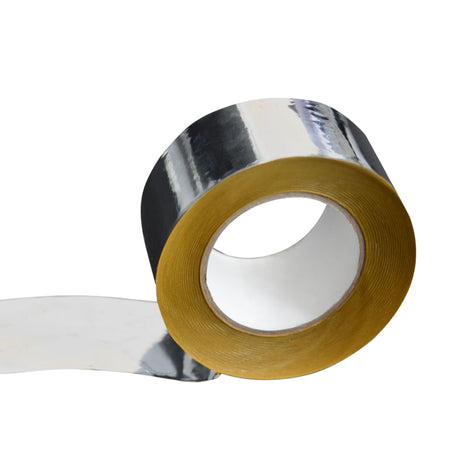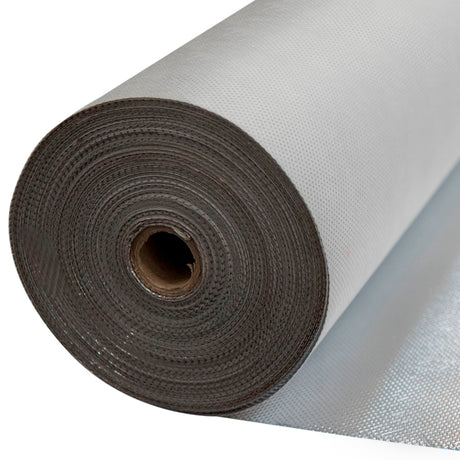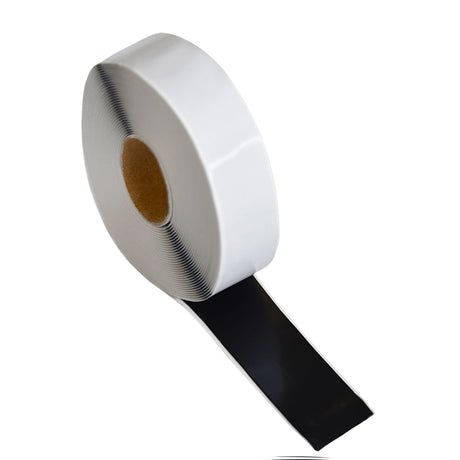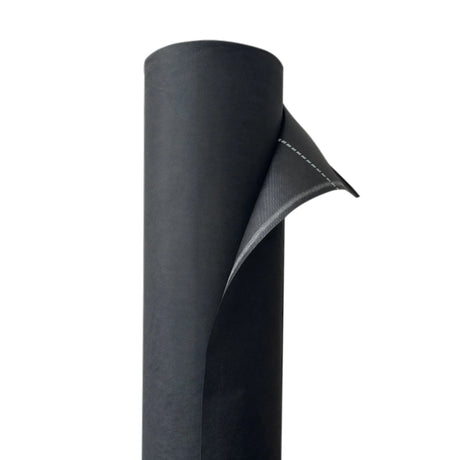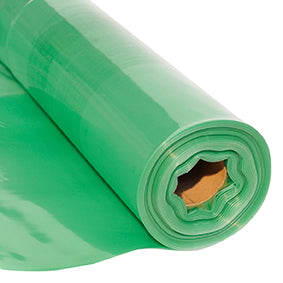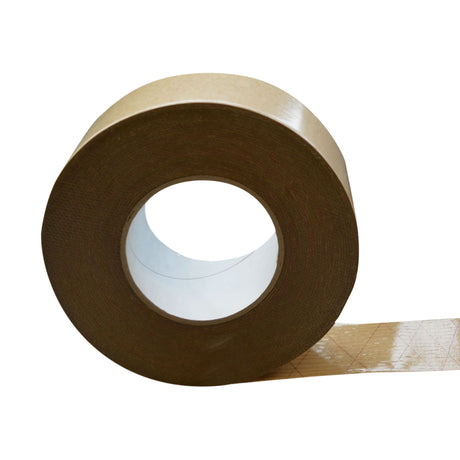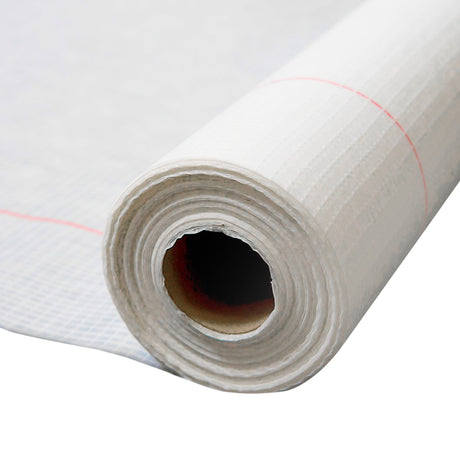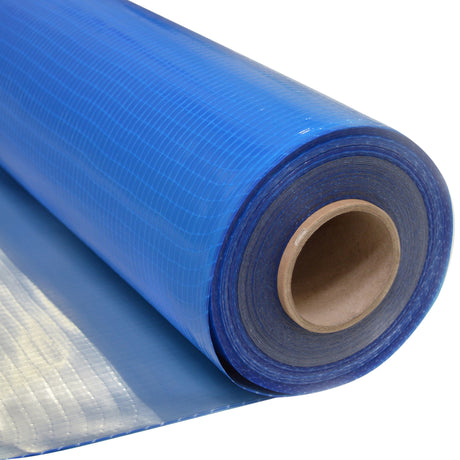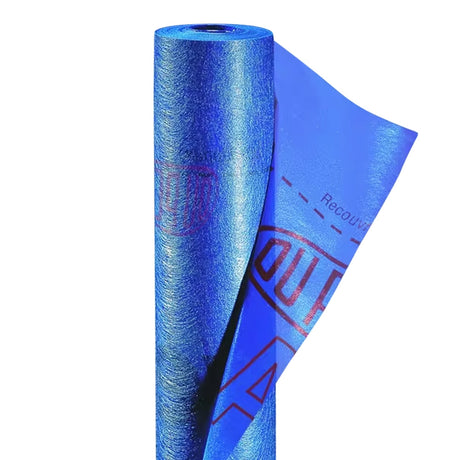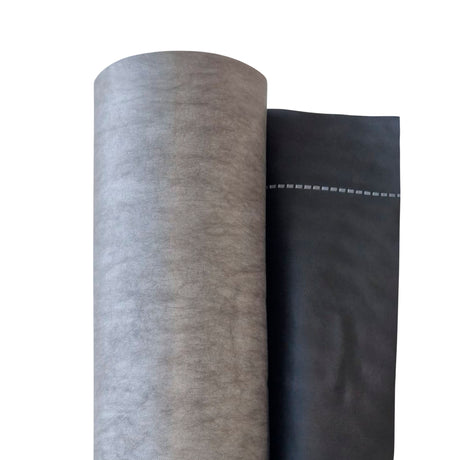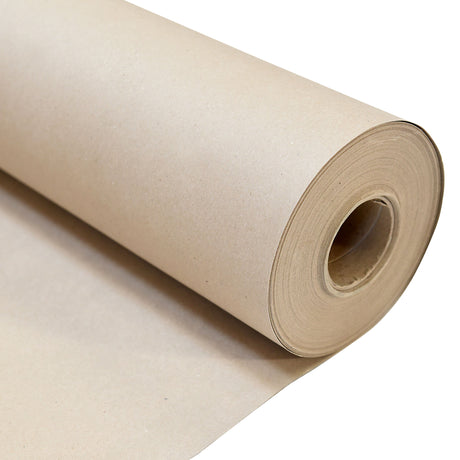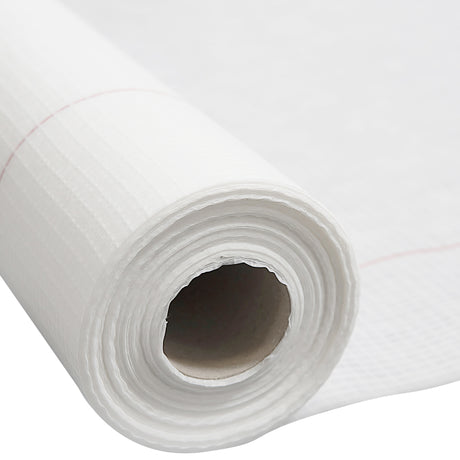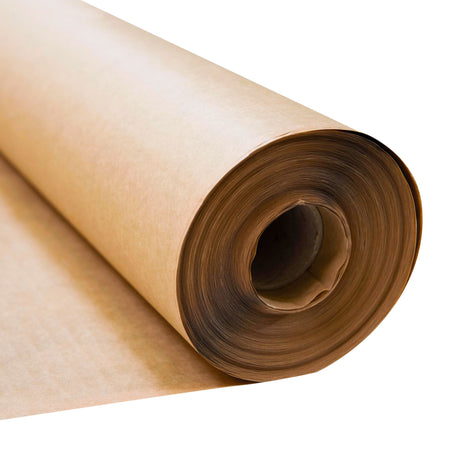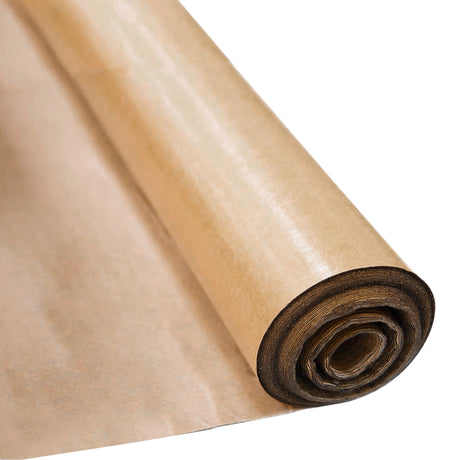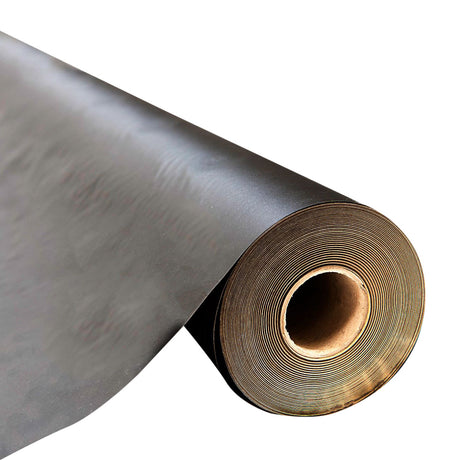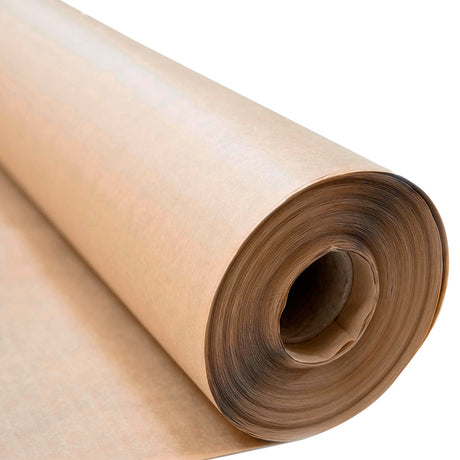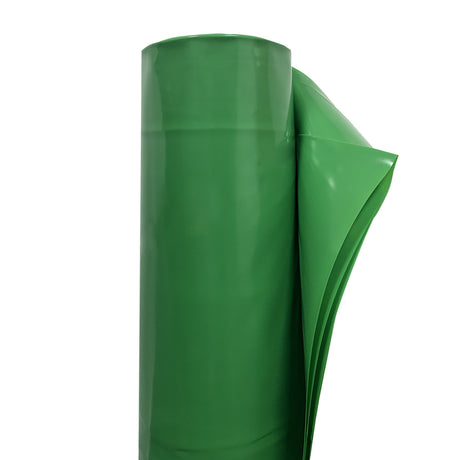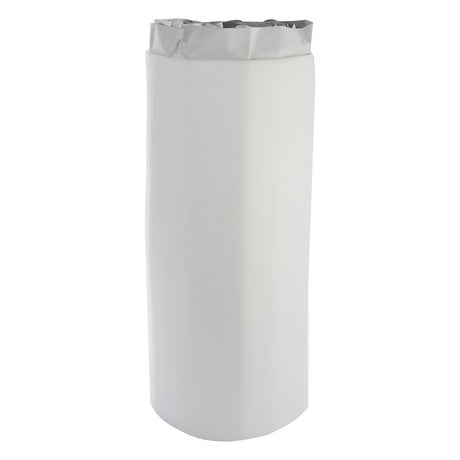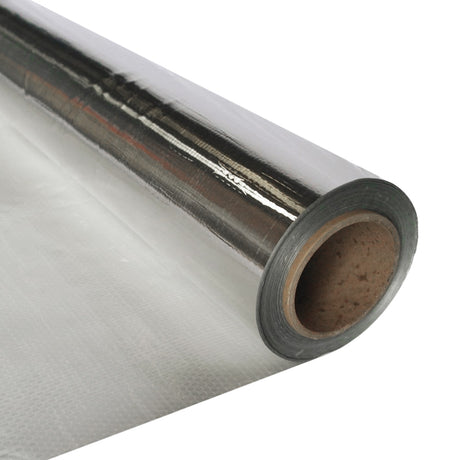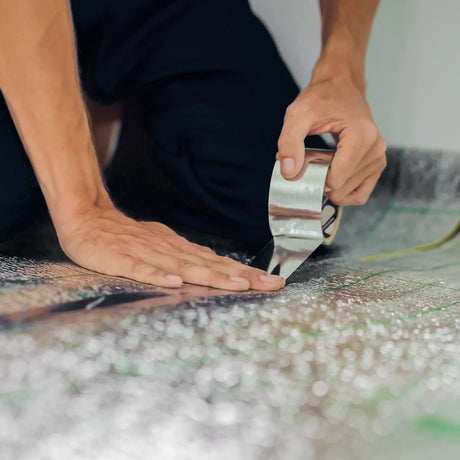DIY Building Supplies
Weed Control Landscaping Weed Membrane 2m x 20m - 40m²
£22.07 Ex VAT£26.48 Inc VATUnit price£0.00 Inc VAT/UnavailableNovia
Novia Black+ Ultra Roof and Wall Breather Membrane 1.5m x 50m - 75m²
£48.46 Ex VAT£58.15 Inc VATUnit price£0.00 Inc VAT/UnavailableEasy-Trim
Easy-Trim Grafter Roofing Breather Membrane - 1m x 50m (50m²)
£45.82 Ex VAT£54.98 Inc VATUnit price£0.00 Inc VAT/UnavailableEasy-Trim
Easy-Trim Breather Membrane Overlap Tape - 38mm x 50m
£14.61 Ex VAT£17.53 Inc VATUnit price£0.00 Inc VAT/UnavailableNovia
Novia Aluminium Foil Lap Tape 45m (48mm, 72mm or 96mm)
From £4.85 Ex VAT£5.82 Inc VATUnit price£0.00 Inc VAT/Unavailable+3 variantsNovia
Novia 500 Gauge (125 Micron) Virgin Grade Polythene VCL 2.7m x 50m - 135m²
£74.49 Ex VAT£89.39 Inc VATUnit price£0.00 Inc VAT/UnavailableNovia
Novia 50mm Double-Sided Butyl Tape 50mm x 10m x 1.5mm
£8.22 Ex VAT£9.86 Inc VATUnit price£0.00 Inc VAT/UnavailableSuperFOIL
SuperFOIL SFTV Thermal Vapour Barrier (VCL) - 1.5m x 25m - 37.5m²
£52.91 Ex VAT£63.49 Inc VATUnit price£0.00 Inc VAT/UnavailableNovia
Novia 30mm Double-Sided Butyl Tape 30mm x 30m x 1.5mm
£15.09 Ex VAT£18.11 Inc VATUnit price£0.00 Inc VAT/UnavailableSuperFOIL
SuperFOIL SFTV Thermal Vapour Barrier (VCL) - 1.5m x 50m - 75m²
£96.06 Ex VAT£115.27 Inc VATUnit price£0.00 Inc VAT/UnavailableNovia
Novia Reflex - Reflective Roof & Wall Breather 1.5m x 50m 75m2
£111.53 Ex VAT£133.84 Inc VATUnit price£0.00 Inc VAT/UnavailableNovia
Novia VC200 Reflective Air Leakage & Vapour Control Layer 1.5m x 50m - 75m²
From £78.81 Ex VAT£94.57 Inc VATUnit price£0.00 Inc VAT/Unavailable+2 variantsNovia
Novia Single-Sided Breather Membrane Lap Tape 25m (50mm or 75mm)
From £16.80 Ex VAT£20.16 Inc VATUnit price£0.00 Inc VAT/Unavailable+2 variantsNovia
Novia FR Breather Membrane 1.5m x 50m 75m²
£140.64 Ex VAT£168.77 Inc VATUnit price£0.00 Inc VAT/UnavailableNovia
Novia AirSeal 310 FR Sealant Cartridge 310ml
£4.44 Ex VAT£5.33 Inc VATUnit price£0.00 Inc VAT/UnavailableNovia
Novia Metallised BOPP Tape 60mm x 50m
£12.96 Ex VAT£15.55 Inc VATUnit price£0.00 Inc VAT/UnavailableNovia
Novia 1200 Gauge (300 micron) Virgin Grade Polythene VCL 4m x 25m - 100m²
£135.14 Ex VAT£162.17 Inc VATUnit price£0.00 Inc VAT/UnavailableNovia
Novia Metalised BOPP Cold Weather Tape 60mm x 50m
£13.31 Ex VAT£15.97 Inc VATUnit price£0.00 Inc VAT/UnavailableNovia
Novia VC8 Reflective Air Leakage Barrier & Vapour Check Laminate 1.5m x 50m - 75m²
£60.59 Ex VAT£72.71 Inc VATUnit price£0.00 Inc VAT/UnavailableNovia
Novia 15mm Double-Sided Butyl Tape 15mm x 22.5m x 2.0mm
£7.10 Ex VAT£8.52 Inc VATUnit price£0.00 Inc VAT/UnavailableNovia
Novia Building Wrap Wall Breather Membrane 2.7m x 100m 270m2
£121.29 Ex VAT£145.55 Inc VATUnit price£0.00 Inc VAT/UnavailableNovia
Novia 1000 Gauge (250 micron) Virgin Grade Polythene VCL 4m x 25m - 100m²
£119.10 Ex VAT£142.92 Inc VATUnit price£0.00 Inc VAT/UnavailableNovia
Novia Double-Sided Lap Tape 50mm x 25m
£10.65 Ex VAT£12.78 Inc VATUnit price£0.00 Inc VAT/UnavailableNovia
Novia VC2 Air Leakage & Vapour Check Laminate 1.5m x 50m 75m2
£77.57 Ex VAT£93.08 Inc VATUnit price£0.00 Inc VAT/UnavailableNovia
Novia STRP Pro High Performance Reinforced Foil VCL 1.6m x 50m 80m2
£169.75 Ex VAT£203.70 Inc VATUnit price£0.00 Inc VAT/UnavailableDIY Building Supplies
AirGuard Control Vapour Control Layer 1.5m x 50m (150m²)
£147.92 Ex VAT£177.50 Inc VATUnit price£0.00 Inc VAT/UnavailableNovia
Novia Black+ Construction Wrap Breather Membrane 2.7m x 100m 270m2
£181.88 Ex VAT£218.26 Inc VATUnit price£0.00 Inc VAT/UnavailableNovia
Novia Floorguard 250gsm Cardboard Roll 1m x 50m 50m2
£30.29 Ex VAT£36.35 Inc VATUnit price£0.00 Inc VAT/UnavailableSuperFOIL
SuperFOIL SFTV Thermal Vapour Barrier (VCL) - 1.5m x 50m - 25 Pack (1875m²)
£2,300.00 Ex VAT£2,760.00 Inc VATUnit price£0.00 Inc VAT/UnavailableSuperFOIL
SuperFOIL SFTV Thermal Vapour Barrier (VCL) - 1.5m x 25m - 50 Pack (1875m²)
£2,533.33 Ex VAT£3,040.00 Inc VATUnit price£0.00 Inc VAT/UnavailableNovia
Novia VC2T Reinforced Synthetic Laminate 75m2
£77.57 Ex VAT£93.08 Inc VATUnit price£0.00 Inc VAT/UnavailableNovia
Novia 509B Reinforced Kraft Shed Liner 1.8m x 50m 90m2
£118.27 Ex VAT£141.92 Inc VATUnit price£0.00 Inc VAT/UnavailableNovia
Novia Polybit Building Paper 1m x 25m 25m2
£57.33 Ex VAT£68.80 Inc VATUnit price£0.00 Inc VAT/UnavailableNovia
Novia B2 Building Paper 1m x 100m 100m2
£65.50 Ex VAT£78.60 Inc VATUnit price£0.00 Inc VAT/UnavailableNovia
Novia B1F Building Paper 1.25m x 50m 62.5m2
£80.11 Ex VAT£96.13 Inc VATUnit price£0.00 Inc VAT/UnavailableNovia
Novia A1F Standard Building Paper 1m (25m or 50m)
From £53.31 Ex VAT£63.97 Inc VATUnit price£0.00 Inc VAT/Unavailable+2 variantsNovia
Novia 1600 Gauge Radon Barrier 4m x 20m 80m²
£101.71 Ex VAT£122.05 Inc VATUnit price£0.00 Inc VAT/UnavailableNovia
RoofReflex Insulated Breather Membrane 1.4m x 10m 14m2
£109.10 Ex VAT£130.92 Inc VATUnit price£0.00 Inc VAT/UnavailableNovia
Novia VC4000 FR Reflective Air Leakage & Vapour Control Layer 1.5m x 50m - 75m²
£170.16 Ex VAT£204.19 Inc VATUnit price£0.00 Inc VAT/UnavailableNovia
Novia STRP Reinforced Vapour Control Layer 2m x 50m 100m²
£169.75 Ex VAT£203.70 Inc VATUnit price£0.00 Inc VAT/Unavailable


